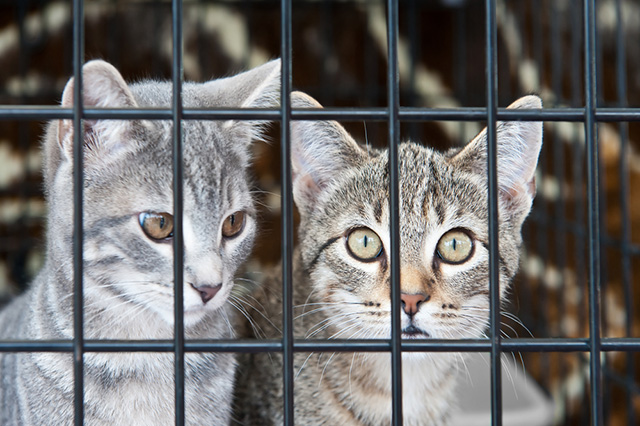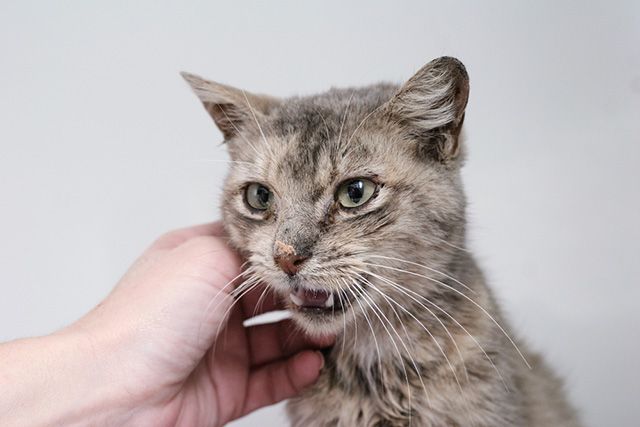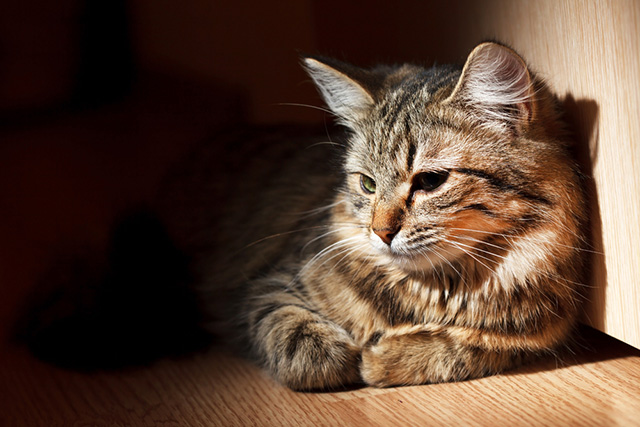Cat ‘flu remains is still relatively common despite the important contribution made by vaccines. The disease can vary in severity, but kittens are particularly at risk and entire litters have been known to die soon after contracting it.
Which cats are at risk of cat ‘flu?
Cat ‘flu is most commonly seen in situations where cats are kept in large groups such as breeding catteries, rescue centres and feral cat colonies, although it can also be seen in pet cat households.
Cats most at risk include unvaccinated cats, kittens, elderly cats and cats which are immunosuppressed for any reason.

Symptoms of cat ‘flu include sneezing, nasal discharge, conjunctivitis (inflammation of the lining of the eyes), discharge from the eyes, loss of appetite, limping in one leg that may then change to another, fever and depression.
Occasionally, mouth and eye ulcers and excessive drooling of saliva may be seen. The very young, very old and immune suppressed cats are more likely to develop severe disease and possibly die as a result of their ‘flu.

Despite the name, the causes of cat ‘flu bears no relation in those of human influenza. Whereas influenza is caused by a single virus, cat ‘flu is a syndrome: the signs of this disease may be caused by one or more of several different infectious agents (pathogens).
There are primarily three known primary pathogens, capable of causing cat ‘flu on their own. These are feline herpesvirus (FHV), feline calicivirus (FCV) and the bacterium Bordetella bronchiseptica. Respiratory disease problems within a household or cattery environment may involve one or more of these infectious agents.
What is Feline herpesvirus (FHV)?
Although the majority of cats infected make a full recovery from feline herpesvirus, this often takes several weeks and some cats are left with the permanent effects of infection such as recurrent eye problems and chronic rhinitis (inflammation of the nose). Cats with chronic rhinitis are usually well in themselves but have a persistent discharge from the nose. Secondary bacterial infection of damaged tissue can cause chronic conjunctivitis, sinusitis and bronchitis (inflammation of the linings of the eyes, sinuses and air passages).
Antibiotic treatment usually only provides temporary relief of these symptoms as the bug is a virus and not a bacteria.
Herpes carriers may come down with cat ‘flu (clinical signs and viral shedding) following potentially stressful events, like staying in a cattery, many months after first catching the disease.
What is Feline calcivirus (FCV)?
Infection with Feline Calcivirus (FCV) usually causes a milder form of cat ‘flu with less dramatic nasal discharges. Mouth ulcers are sometimes the only sign of infection with FCV. The ulcers may be present on the tongue, on the roof of the mouth or the nose. Some strains of FCV cause lameness and fever in young kittens. Cats with the infection recover over a few days although they may benefit from pain killers at this time.
Cats carrying FCV shed virus continually with most cats eventually becoming carriers, but some are persistently infected – sometimes this is associated with mouth inflammation (gingivostomatitis).
What is Bordetella bronchiseptica (Bb)?
This infectious bacterium is more commonly known as the most important cause of canine infectious tracheobronchitis (Kennel Cough). However, this bacterium also causes respiratory signs in cats that can be hard to differentiate from cat ‘flu caused by viral infections. Bordetella can be a particular threat to young kittens and occasionally whole litters of kittens may be lost to this infection.
Cats that recover from cat ‘flu are often unable to completely eliminate the virus or bacteria from their body and many become ‘carriers’, able to transmit the disease to other cats for years.

How is cat ‘flu spread?
Both cat ‘flu viruses and bacteria are relatively sturdy and can survive in the environment for several days. They are spread in several ways; through direct contact with an infected cat showing signs of ‘flu or disease, from direct contact with a contaminated environment for example, clothing, food bowls and other objects and from contact with a cat that is a carrier of cat ‘flu – the carrier may or may not be showing signs of disease.
How do you prevent cat ‘flu?
Risks of developing cat ‘flu can be reduced by regular vaccination against FHV, FCV and Bordetella bronchiseptica.
How do you treat cat ‘flu?
If your cat comes down with cat flu then take them to your veterinarian as they will need medical supervision to help with the pain, any eye infections and secondary bacterial infections requiring antibiotics.
Your veterinarian may decide to swab the nose, eyes and mouth to determine which pathogen is involved.
The eyes and nose should be kept clean by wiping with a cotton wool pad dipped in warm water to remove discharge.
Your cat may be reluctant to eat so tempt your cat to eat by offering slightly warmed wet food which is more palatable.
If you have more than one cat in your house then the cat should be isolated and you should wear disposable gloves to prevent contamination.
